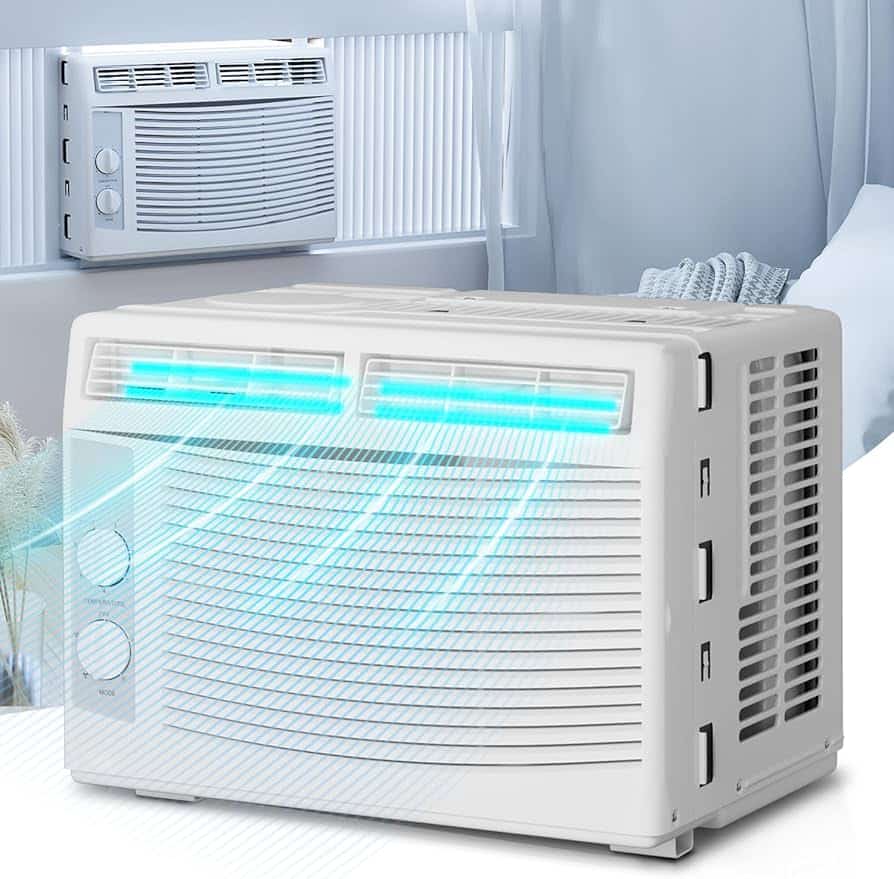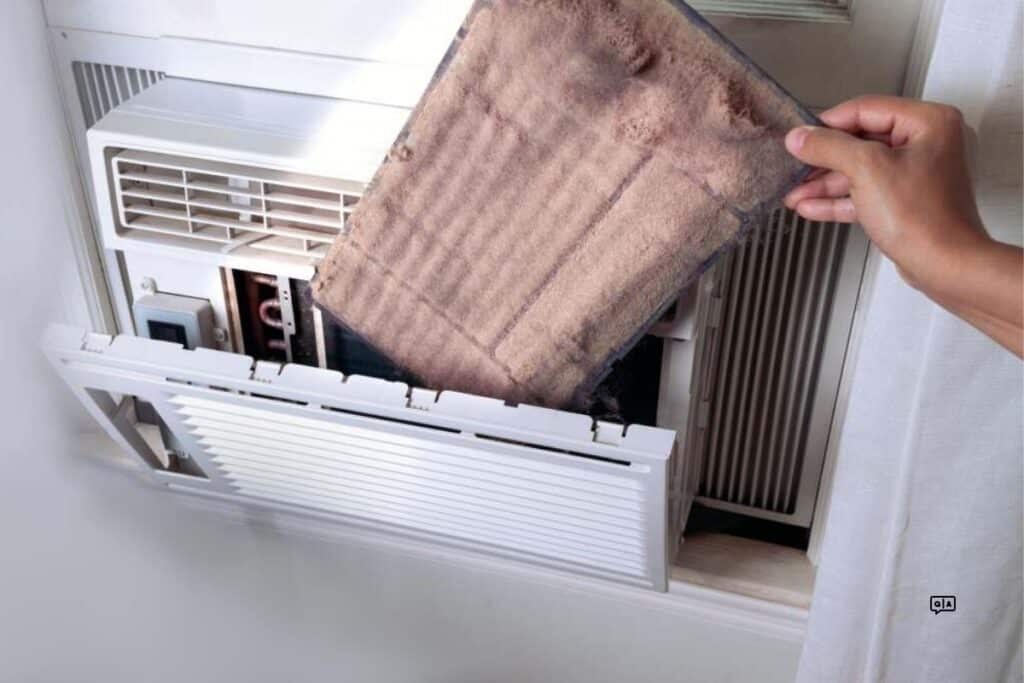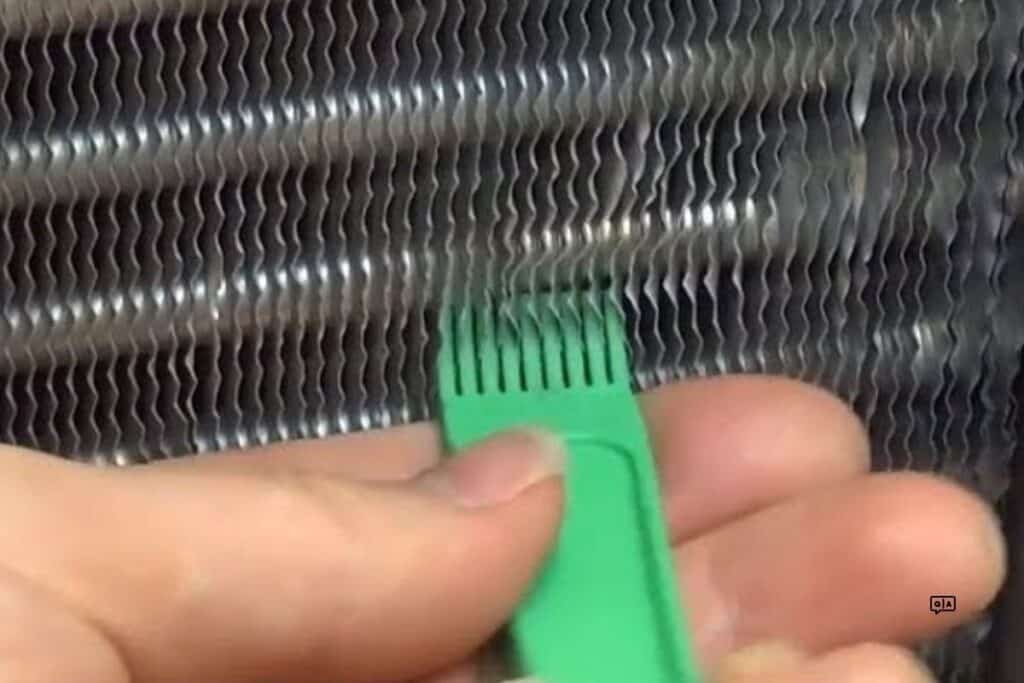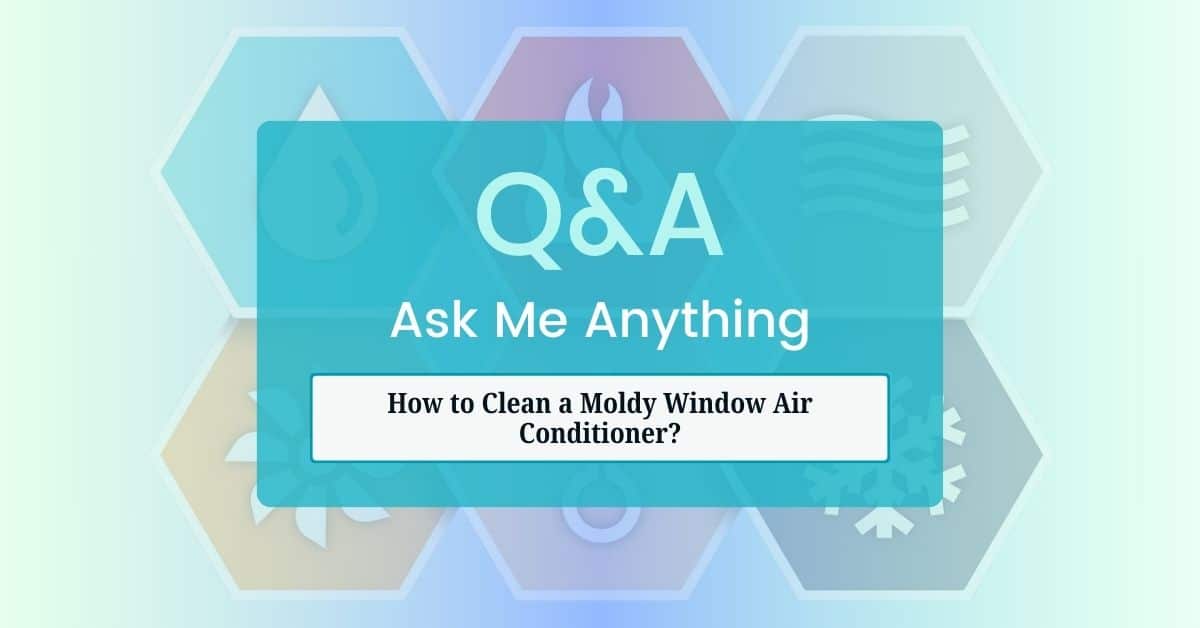Cleaning a moldy window air conditioner is crucial for your health and the unit’s efficiency. Mold spores can circulate through the air when the unit runs, potentially causing respiratory issues and allergic reactions. Additionally, mold buildup can impair the AC’s cooling efficiency. Below, I’ll guide you through a detailed, step-by-step process on how to clean your moldy window air conditioner safely and effectively and offer tips for preventing future mold growth.
1. Gather Supplies and Prepare the Area
Before you begin cleaning, you’ll need the following supplies:
- Gloves, a mask, and safety goggles (to protect yourself from mold spores and cleaning chemicals)
- A screwdriver (to remove the front panel or access the internal parts)
- A spray bottle with a mixture of bleach and water (1:10 ratio) or a commercial mold cleaner
- Mild dish soap
- A soft brush or sponge
- A toothbrush for small crevices
- A bucket of warm water
- Microfiber cloths or rags
- A vacuum with a brush attachment (optional but helpful for removing dust)

If possible, place the window air conditioner on a flat, stable surface or lay down a tarp to catch any drips if cleaning in place.
2. Unplug and Disassemble the Unit
Unplugging is a key first step to ensure your safety, as water and electricity don’t mix. Disconnect the unit from the power outlet and, if feasible, remove it from the window to make the cleaning process easier.
Once the AC is unplugged, use a screwdriver to remove the front panel and the filter. Many window AC units also have an outer casing that you may need to remove to access internal components.
3. Clean the Air Filter

The air filter in a window AC is usually the first place mold develops. Remove the filter carefully and check for any visible mold or dust. Use warm, soapy water to clean the filter. For a deeper clean, spray it lightly with a bleach-water mixture and let it sit for 10-15 minutes to kill any remaining mold spores.
Rinse the filter thoroughly with warm water and allow it to air dry completely. Avoid placing a wet filter back into the unit, as this could encourage future mold growth.
4. Clean the Evaporator Coils
The evaporator coils inside the unit often collect moisture, making them a common spot for mold buildup. Use the vacuum with a brush attachment to remove loose dirt and dust from the coils.

Once dust-free, spray the coils lightly with bleach or a commercial coil cleaner. Let the cleaner sit for 15-20 minutes to break down mold and grime.
Afterward, use a soft brush or cloth to gently scrub the coils, removing any remaining residue. Be careful not to bend or damage the fins, which can impact the unit’s performance.
5. Clean the Interior (Drain Pan, Blower Wheel, and Other Parts)
Inspect the drain pan, blower wheel, and other internal parts accessible within the unit. Mold can grow in any moist area, so cleaning all parts thoroughly is crucial.
- Drain Pan: The drain pan collects condensation, so it’s prone to mold growth. Clean it using the bleach solution and a sponge or cloth, scrubbing gently to remove any visible mold. Rinse the pan with warm water and dry it thoroughly.
- Blower Wheel and Fan Blades: Use a toothbrush to clean the fan blades or blower wheel. A toothbrush’s bristles can get into tight spaces, allowing you to remove grime and mold effectively.
- Other Interior Parts: Use a microfiber cloth or sponge dampened with bleach solution for other areas, such as corners or vents. Be thorough but gentle to avoid damaging internal components.
6. Rinse and Wipe Down All Parts
After scrubbing, wipe down all parts with a clean, damp cloth to remove any residue from the bleach solution. This step is crucial to prevent bleach fumes from circulating when running the AC. Allow everything to dry completely before reassembly.
If you’re in a hurry, you can speed up drying by placing the parts in sunlight, which also helps to kill any remaining mold spores. Alternatively, you could use a fan to help with drying.
7. Reassemble the Unit and Test
Once all parts are dry, reassemble the air conditioner. Insert the filter, replace the front panel, and screw everything back into place. Carefully move the unit back to its position in the window (if you removed it) and plug it back in.
To check if you’ve fully eliminated the mold, run the AC on a high setting for a few minutes. Make sure there’s no musty or moldy smell. If there is, you may need to inspect and clean again or consider professional servicing if the mold persists.
How to prevent mold from growing in the window AC unit?
Regular maintenance prevents mold from developing in your window AC unit. Here are some preventive tips:
- Run the Unit on Dry Mode: Many window air conditioners have a Dry Mode or Dehumidify Mode. Running the AC in this mode reduces indoor humidity, which helps to prevent mold growth.
- Regularly Clean the Filter and Coils: Cleaning the air filter monthly and the coils every few months will help keep the system free of dust and prevent moisture buildup. During peak use, more frequent cleaning may be necessary.
- Use Mold-Resistant Spray (Optional): After cleaning, spray a mold-resistant solution on the coils and other areas prone to mold. These sprays are designed to prevent mold regrowth and are safe for AC units.
- Allow the Unit to Dry Out: Before shutting off the unit for long periods, like the end of the day, switch to the fan mode for 10-15 minutes. This will help dry any residual moisture within the unit.
Cleaning a moldy window air conditioner may take some time, but thorough cleaning will improve air quality, eliminate unpleasant odors, and keep your AC running efficiently. If you encounter persistent mold issues despite regular cleaning, you may need professional HVAC assistance to address possible hidden mold within the unit.






